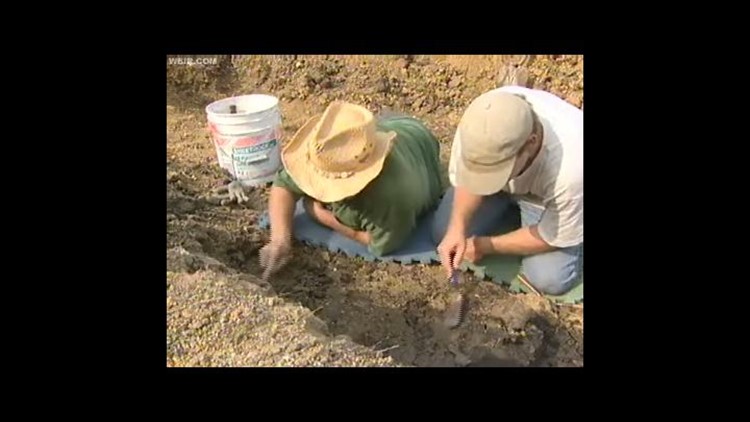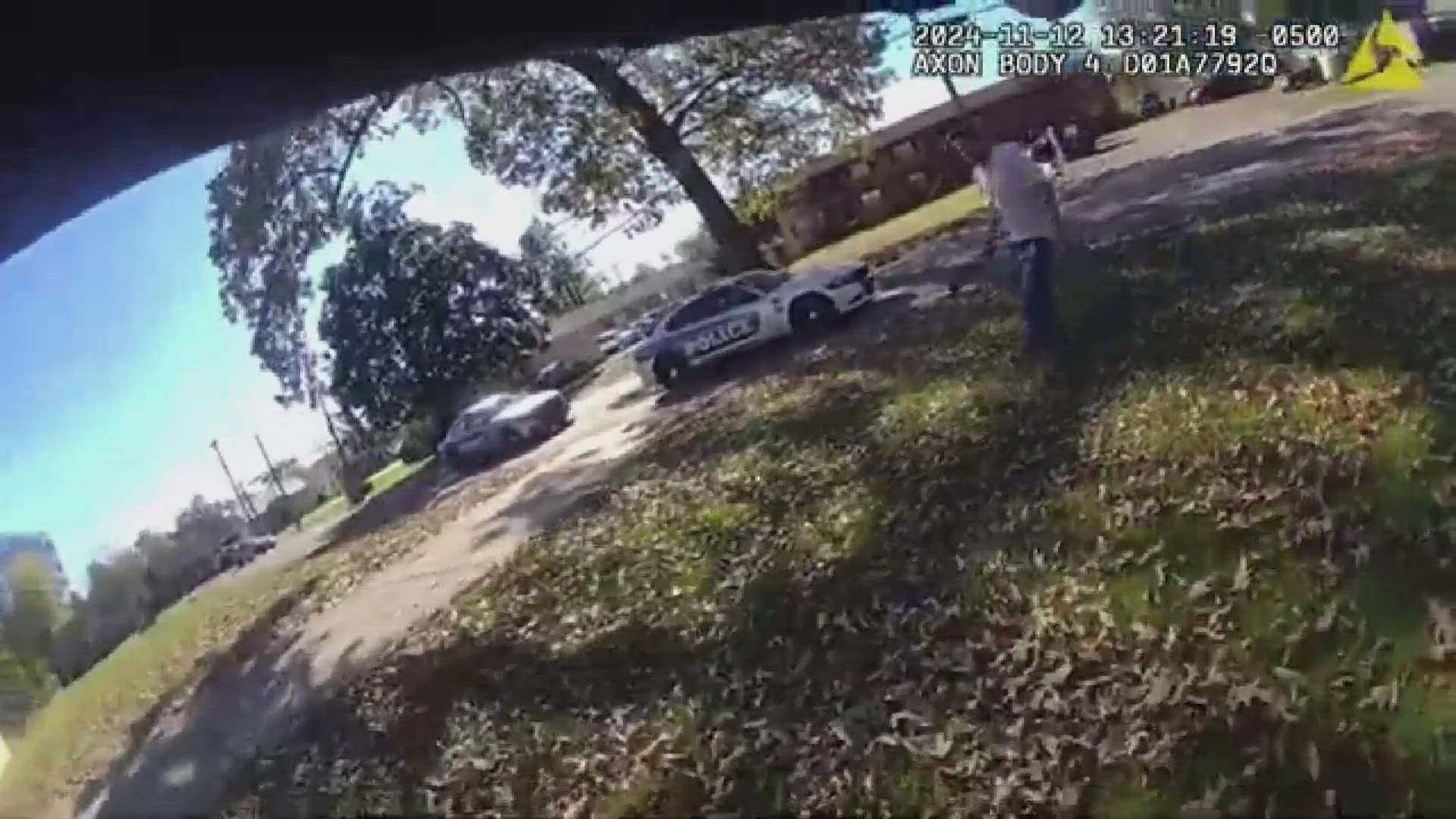This is a two-part series looking at the Gray Fossil Site TDOT crews stumpled upon during a road expansion project in 2000. The site is now an active research facility complete with a museum and visitor center. PART ONE: The discovery and ongoing researchIn Gray, Tennessee, researchers meticulously scrape away years of life as they uncover a porthole to the past. Seven years ago, there were no scientists at this site, only TDOT crews and a mound of construction. Unexpectedly, they hit a major road block."They were just going to slice off the top of this hill," says Jeanne Zavada, Director of the Natural History Museum at the Gray Fossil Site, as she points out the old construction area. "And when they did, they encountered dark sediments underneath."A slice of life from long ago stopped crews in their tracks. TDOT called in a team of geologists."They found a rhino jaw, an alligator skull, and several tapir bones," adds Zavada. "They knew then that they had found something very significant."Construction immediately stopped, and East Tennessee State University took over."I absolutely love it," says Dr. Steven Wallace, Director of Research and Curator of Animals at ETSU. "The real excitement isn't necessarily what you find, but what you might find that makes it fun."A team of researchers, led by Dr. Wallace, have transformed this carved out hillside into the Gray Fossil Site, a working research facility."What you have to envision is kind of a fairly dense forest basically surrounding a pond," says Dr. Wallace.The site is more than a hundred feet deep and covers 5 acres. Dr. Wallace and the other researchers believe it dates back to the Miocene age. "The rhinos go extinct in America 4.5 million years ago, and then we have a short faced bear that first shows up 7 million years ago," says Dr. Wallce. "So, it's kind of like where do the two ranges overlap."For now, they are concentrating on two sections of the site. An area known as the rhino pit has produced the most fossils. "We dug for quite a while before we found anything," remembers Dr. Wallace. "We ran into a rhino right dead center of the pelvis. We spent 9 weeks just kind of following the skeleton working our way up the side of the body. The History Channel or the Discovery Channel kind of give you this misconception that you always see the entire skeleton laid out. That's rare."In just three years, researchers have uncovered animal and plant remains from the Gray Fossil Site. "It's the only one really in this part of the country that actually preserves the former forests that would've been here at that time," says Dr. Wallace.They have even discovered the Eurasian badger and the red panda once lived in East Tennessee."To find that lower jaw is really confirmation that that animal really is here," says Dr. Wallace. "It's a significant find."It is only the second record of a red panda in North America.Down the hill from the rhino pit, researchers are just beginning to unearth significant finds at the other excavation site."This is actually a tail vertebra from an elephant," says Dr. Wallace, pointing out the team's most recent discovery of a shovel-tusked elephant.Using delicate tools, researchers dig around the fragile remains. Every ounce of dirt is bagged. Researchers and volunteers sift through it."Hopefully what's left is bone or plant material," says Dr. Wallace. Researchers spend part of the year in the field digging, the other in a preparation laboratory where the real fun begins."We pull out all the little bones," says Dr. Wallace. "We have literally an army of volunteers that does our picking. In most cases what you've got is a 3-D jigsaw puzzel with no original picture, but like a jigsaw puzzle, it only goes together one way."From excavation to restoration, scientists are literally just beginning to scratch the surface of this ancient discovery."I'll retire long before we finish out here," says Dr. Wallace.PART TWO: Natural History MuseumIt is hard to imagine wild alligators, sabertoothed cats, and shovel-tusked elephants roaming East Tennessee. The brand new, 33,000 square foot Natural History Museum at the Gray Fossil Site helps visitors see that time period."Here we have a timeline from 4.6 billion years of Earth history," says Jeanne Zavada, Natural History Museum Director, describing one of the Museum's displays.Inside the museum's walls, the Miocene Age comes to life."What we want to do is make the science of the Gray Fossil Site personal and understandable," says Zavada.Guests begin with a movie and then enter into a recreation of a Miocene forest, complete with animal and plant life, much of which is extinct today. Scientists have created each skeletal display using molds made from fossils found deep within the Gray Site."We've found more tapir at this site than any place in the world," says Zavada, pointing to a mold of a tapir.Many of the display areas are also interactive. Kids can actually work through synthetic material in a mock dig pit to try to find some of the same fossils paleontologists have found outside.For every hour spent in the field, scientists spend 20 hours in the lab. "Over on this side, we have the cleaning and prepping of fossils," says Zavada.Visitors try their hands at it in a makeshift labratory resembling the indoor environment where scientists piece together their findings.The Natural History Museum at the Gray Fossil Site offers visitors a glimpse of the work that will last scientists a lifetime.The Natural History Museum and the Gray Fossil Site are located less than 2 miles off Interstate 26 near Johnson City. It is open daily and offers guided tours. If you would like more information on the museum or the Gray Fossil Site call 1-866-202-6223 or click on the attached links.
Tennessee Wonder: Scientists unearth prehistoric life at Gray Fossil Site
Seven years ago, TDOT crews were widening a road in Gray, Tennessee near Johnson City. They hit a road block, prehistoric life burried under centuries of dirt.



